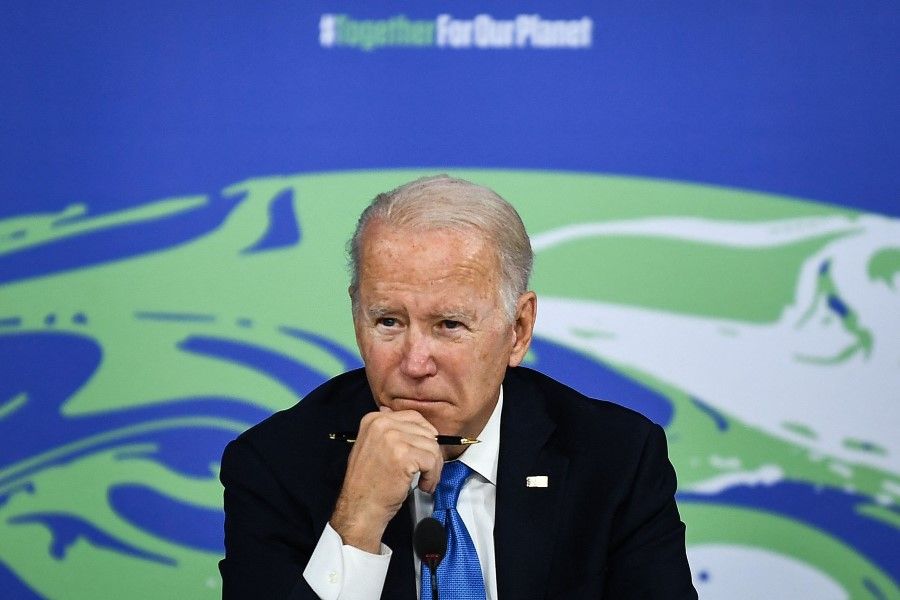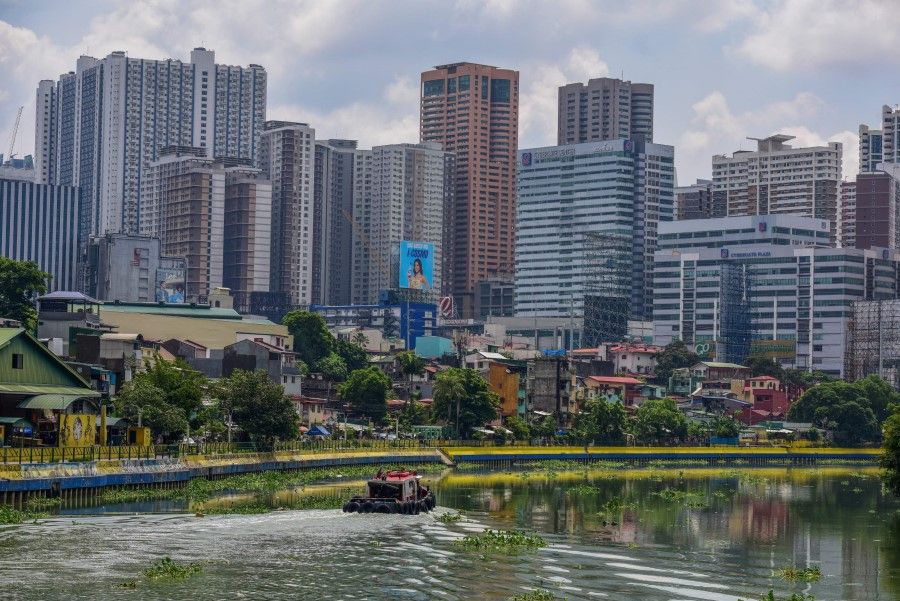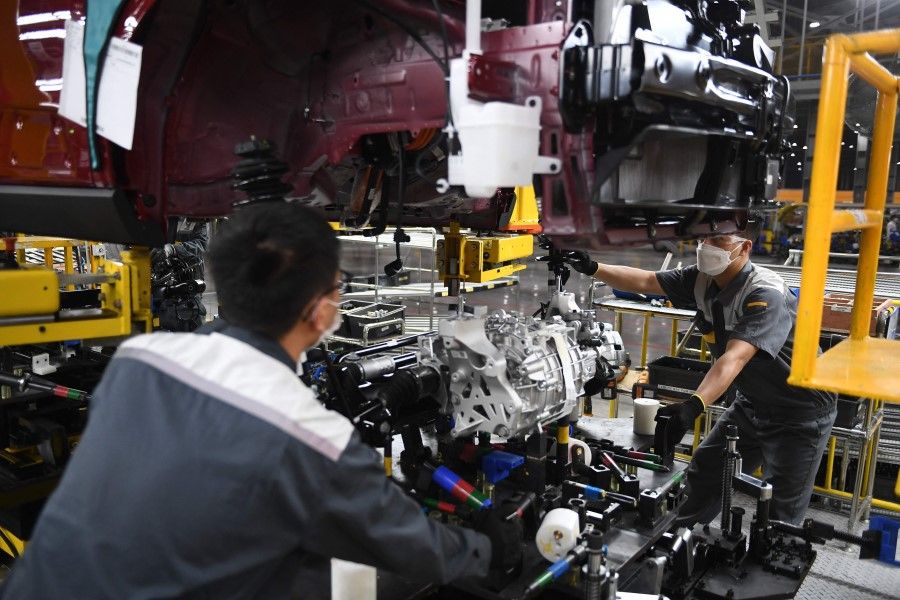No new market access, but IPEF could be a promising start

The recently launched Indo-Pacific Economic Framework for Prosperity (IPEF) is the Biden administration's attempt at re-energising broad and sustained economic engagement in the region. After Trump pulled the US out of the Trans Pacific Partnership in 2017, Washington has lacked a substantial platform for such engagement. Yet it may struggle to gain traction and relevance in a crowded constellation of recently launched frameworks such as the G7's US-initiated Build Back Better (B3W) and the EU's Global Gateway.
Furthermore, the ghost of Trumpian anti-trade populism continues to haunt this new regional endeavour. This is evident in the fact that none of its four pillars - quality trade rules, supply chain resilience, green infrastructure and anti-corruption - involves offering new market access. Yet the latter is considered the primary incentive for nations to engage in economic diplomacy.
These issues beg the question of whether IPEF is necessary, or can contribute anything meaningful to the Indo-Pacific's economic needs. In short, it can, but much depends on whether IPEF's low-on-ambition starting point can be overcome, and whether its regional focus as a key differentiator from similar initiatives can be leveraged into something more substantial over time.
IPEF allows uncontentious and broad regional buy-in
Starting with forum differentiation, the US leads both IPEF and the G7's B3W, while the EU states of Germany, France and Italy are part of the G7, and thus are partners for both B3W and the EU's Global Gateway. Consequently, these initiatives have substantial membership overlap, a shared liberal democratic governance philosophy, and substantive similarities across core policy pillars - putting into context the EU's statement that "Global Gateway and the US initiative Build Back Better World will mutually reinforce each other". Each initiative grounds its core approach in the language of transparency, good governance and quality public-private investment.

Such language is designed to distinguish these forums from China's Belt and Road Initiative (BRI), which is regularly reported to have poor transparency, hidden debts and high levels of corruption. As a result, both B3W and Global Gateway are typically measured against, and viewed as, responses to Beijing's global BRI ambitions, highlighting the inescapable geopolitical inflection on all current transnational economic initiatives.
However, there are differences too. B3W is seen as having high potential for broader multilateral engagement, for example by partnering with the UN development ecosystem and aligning with UN sustainable development goals (SDGs). Global Gateway is more narrowly aimed at infrastructure and connectivity between the EU's internal market and other regions. Both frameworks have a global outlook, and therefore will have to spread their resources across key global regions.
IPEF's open, economic framing allows uncontentious and broad regional buy-in, without unnecessarily provoking Beijing, or forcing nations to pick between IPEF or BRI - a contest that IPEF would likely lose in many Southeast Asian capitals.
IPEF distinguishes itself from both B3W and Global Gateway through a clear regional, rather than global focus. Given IPEF's regional focus, it should become Washington's premier economic engagement forum in the region, with B3W focused on other global regions in need of development. While IPEF will implicitly act as an economic balance to China, the forum is explicitly pitched as an open economic framework, in contrast to the Quad and AUKUS, which are primarily military-security oriented frameworks.
IPEF's open, economic framing allows uncontentious and broad regional buy-in, without unnecessarily provoking Beijing, or forcing nations to pick between IPEF or BRI - a contest that IPEF would likely lose in many Southeast Asian capitals. As a result, 13 Indo-Pacific nations were participants at IPEF's official launch.
So what exactly are these governments buying into? According to sceptics, nothing worth the effort, given the low, if not to say no, ambition around market access.
This scepticism is warranted. At a time when US domestic politics imposes powerful constraints on Washington signing up for new free trade agreements, IPEF is a "second best" option for regional engagement compared to the Comprehensive and Progressive Agreement for Trans-Pacific Partnership (CPTPP). The latter has both quality rules and market access commitments.

Furthermore, analysts have pointed out that if IPEF becomes a "democratic values" sales platform in a region where new bridges and roads hold more weight than liberal-democratic rhetoric, then BRI's pragmatic, lecture-free project packaging will remain a regional favourite. Yet clearly there is regional interest in IPEF, given the initial political capital invested by the founding participants, thus a more nuanced reading is called for.
When picking between democracy lectures and coercion, it may turn out that the occasional lecture is not such a terrible price to pay after all.
The occasional lecture from the West versus economic coercion from China
First, IPEF offers an option that can boost autonomy in a contested region where all states are seeking to maintain as much national policy space as possible. For example, while BRI financing comes lecture-free, it does produce increased economic dependency on Beijing. In recent years, Beijing has demonstrated an increasing willingness to turn economic dependency into a vulnerability, using economic coercion to punish trade partners who follow undesired political lines, or during territorial disputes in the South China Seas. When picking between democracy lectures and coercion, it may turn out that the occasional lecture is not such a terrible price to pay after all.
Furthermore, if IPEF is the best the Biden administration can currently offer to begin rebuilding conditions for enhanced economic influence in the region, then nations who want continued US engagement must offer support for the initiative. American domestic politics may become more favourable later concerning market access options, hence it is logical to engage with Washington and bide time - keeping front and centre the logic of increasing overall availability of strategic options.

Second, IPEF can offer a platform for participating countries to drive domestic reform. Committing to obligations in an international agreement is a common tool used by domestic reformers to overcome domestic barriers, and prevent backsliding at a later date. IPEF pillars on trade rules and anti-corruption in particular, hold high potential for impactful domestic reform.
For example, SMEs currently account for around 70% of employment across the Indo-Pacific, yet manage to produce only 35% or less of direct exports. Improved trade facilitation rules through engagement with IPEF's trade rules pillar, can benefit SMEs by making trade less complex and easier to administer, thereby offering a large potential for SME trade growth. This could have a positive knock-on effect on supply chain diversification by bringing more SMEs into the international trade mix as new suppliers.
On the other hand, the lack of new market access will weigh against IPEF's positive impact on supply chain diversification. Tax and anti-corruption reform will be a tough sell, but can pay handsome dividends in economies that choose that pillar. While the green economy pillar, particularly its capital provision aspect, is likely to be a welcome BRI alternative.
To sum up, in its favour, IPEF undoubtedly holds potential, has gained good initial buy-in and is driven by forward-looking economic logic. What is stacked up against IPEF is that it is an unusually constrained type of trade forum. It offers no new market access to sweeten difficult negotiations; instead, it holds out the promise of future returns through difficult reforms.
Yet, it promises something more - a strategic sweetener for governments in the region seeking balancing options in a geopolitically fraught region. Whether that will be enough to get some momentum remains to be seen, but IPEF is already off to a good first step.
Related: India's choice: Pro-US, pro-China or stay autonomous? | 'Doomed to fail': Chinese media dismisses the US's ASEAN diplomacy | Biden's Asia tour: US deepening its commitments to counter China | US-ASEAN summit: Washington still has an uphill climb | South Korea's pivot to the US will impact ASEAN
